I am a bit confused by the implementation of the random number generator in C, which is also apparently different from that in C++
If I understand correctly, a call to 'srand(seed)' somehow initializes a hidden variable (the seed) that is accessible by 'rand()', which in turn points the function to a pre-generated sequence, like for example this one. Each successive call to 'rand()' advances the sequence (and apparently there are other ways to advance in C++), which also suggests the use of an internal hidden pointer or counter to keep track of the advance.
I have found many discussions on how the algorithms for pseudo-random number generation work and the documentation of the functions rand() and srand(), but haven't been able to find information about these hidden parameters and their behavior, except for the fact that according to this source, they are not thread-safe.
Could anybody here please shed some light as to how are these parameters defined and what should be their defined behavior according to the standards, or if their behavior is implementation-defined?
Are they expected to be local to the function/method that calls rand() and srand()? If so, is there a way to communicate them to another function/method?
If your answer is specific to either C or C++, please be so kind to point it out. Any information will be much appreciated. Please bear in mind that this question is not about the predictability of data generated by rand() and srand(), but about the requirements, status and functioning of their internal variables as well as their accessibility and scope.
